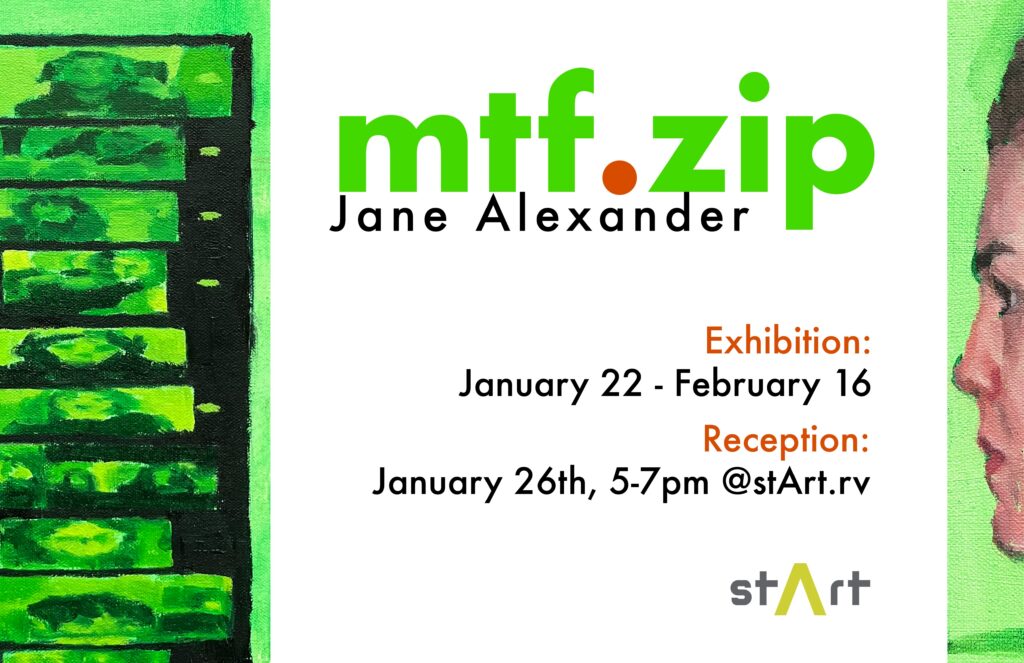mtf.zip

mtf.zip
Works by Jane Alexander (’25)
JANUARY 22 – FEBRUARY 16
stArt.rv (Reynolda Village)
“Gender is taught. Gender is imbued. Gender is reclaimed. Gender is created. In recent years, the number of transgender people in the United States has grown dramatically. The reason? Community and visibility. Transgender people are more able to understand ourselves when we can see and listen to each other. In previous generations, the role of community was filled by cities and was brought about by dense queer populations in the same geographical location. In the past two decades, the network of the city has been replaced by the network of the web – trans circles grow in spaces such as tumblr, reddit, 4chan, youtube, and instagram. Some of these networks are healthier than others – for example, consider ruthless, endless critique found in boards on 4chan and reddit, or the contrived dichotomy between “dolls” (feminine, passing trans women) and “bricks” (non-passing or “clockable” trans women) found in more mainstream spaces.
Visibility also leaves us exposed to scrutiny, hate, and fetishization by cisgender people. Policymakers listen to amplified reactionary spaces, themselves made more visible by the internet. And, speaking to fetishization, being transgender is a sexualized identity (although not inherently a sexual one). Pornography featuring trans women has become one of the largest categories produced for cisgender, heterosexual men, almost exclusively consumed online. An established link between pornography and sexual violence is painfully consistent with the fact that trans women are disproportionately affected by the latter. Is it possible to reconcile this with the use of the internet as a healthy sexual resource?
In mtf.zip, I use paint and photo as a means to convey the relationship between transfemininity and the internet. I engage with aesthetics of meme culture and photo editing (photo editing being a means towards solace, expression, and self actualization for transfems) and reproduce unaltered, existing internet images, exploring the internet as a way to both create and understand gender. mtf.zip approaches the ways cisgender people view trans women (in pornographic excess for some and disgust or discomfort for others) as well as the ways trans women view cisgender people, ourselves, and each other.
Jane 2.0 sits at the center, both perceived and perceiving. She is both a stand-in for the aforementioned “dolls” and reflective of the process of creating gender, having been transformed from a found object — one with an existing history — and given new meaning. The concept is based on Lynn Hershmann Leeson’s Dollie Clones, made in the 1990s. The shift in historical context changes the work’s meaning — while Leeson’s dolls were made at a time where the capabilities of the internet were still being explored, Jane 2.0 is made in a post-internet age, where we can see how the web has actually affected our ways of being. Trans people are, somewhat uniquely, faced with torrents of information, misinformation, pride, love, lust, anxiety, hate, and self-loathing regarding their identities as a result of the internet, and mtf.zip seeks to analyze and critique these modes of perception.”
Reception
Friday, January 26 5-7PM

